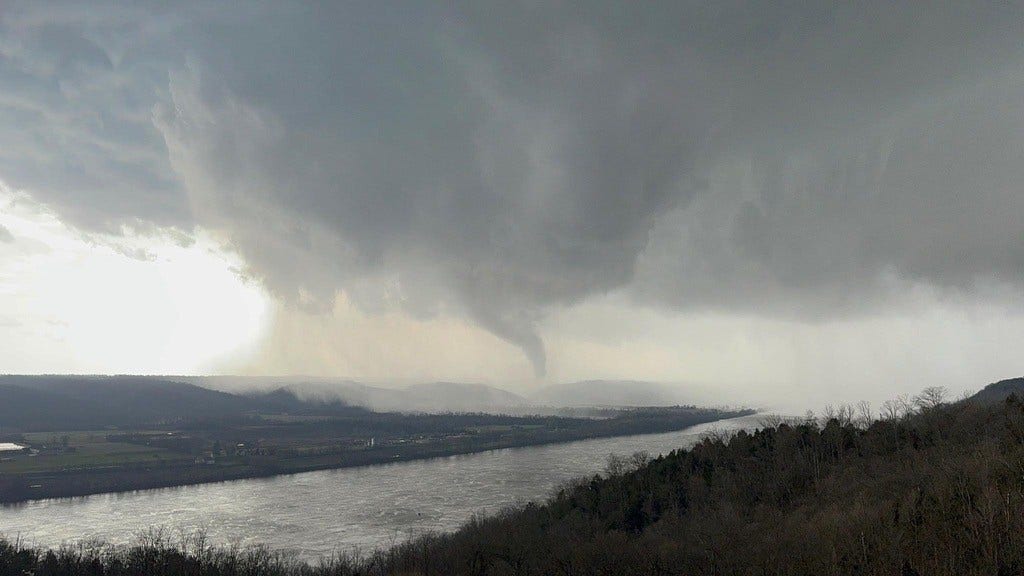A large storm system is expected to hit much of the central U.S., bringing severe thunderstorms and the possibility of tornadoes to states such as Kansas and Nebraska. Parts of Oklahoma, Missouri, and Virginia also face a slight risk of severe weather. There have been reports of a high number of tornadoes in West Virginia last week, which is more than double the yearly average. Severe scattered thunderstorms are also anticipated to bring strong winds, hail, and flash flooding to the affected areas.
After moving through the Great Plains, the storm system is forecasted to move into the Mississippi Valley, Great Lakes, and Ohio Valley areas. Southern Iowa, Northern Missouri, and Central Illinois face the most significant threat of hail and tornadoes on Tuesday. The risk of tornadoes forming in Kansas and Nebraska on Monday evening is expected to increase with the development of discrete supercells. These supercells are known for producing tornadoes and hail with rotating, powerful updraft winds lasting for hours.
Tornado season, which typically ranges from late April to the middle of May, is when the strongest tornadoes capable of causing fatalities usually occur. There is a notable amount of uncertainty in predicting the occurrence of tornadoes due to the variability of each season from year to year. Some scientists believe that tornadoes in the U.S. have been shifting over the past few decades, with an increase in tornadoes appearing in states along the Mississippi River and farther east. The exact reasons for this shift remain unclear, but one possible factor could be the effect of climate change causing changes in precipitation patterns.
The National Weather Service is forecasting severe thunderstorms and the potential for tornadoes for areas stretching from Lincoln, Nebraska to Baltimore. Parts of Kansas and Nebraska could see strong tornadoes, while a slight risk of severe weather is also present in Oklahoma, Missouri, and Virginia. Reports indicate that West Virginia experienced a high number of tornadoes last week, exceeding the average for the year. The severe scattered thunderstorms could bring damaging winds, large hail, and flash flooding to the affected regions.
As the storm system moves through the Great Plains into the Mississippi Valley, Great Lakes, and Ohio Valley areas, there is an increased risk of severe weather and isolated flash flooding. Southern Iowa, Northern Missouri, and Central Illinois are expected to face the largest threat of significant hail and tornado potential on Tuesday. Tornado scientist Harold Brooks notes that the variability of tornado seasons makes it challenging to predict with certainty when and where the strongest tornadoes may occur. The shift in tornado occurrence patterns across the country is also a phenomenon that has raised questions from scientists.














